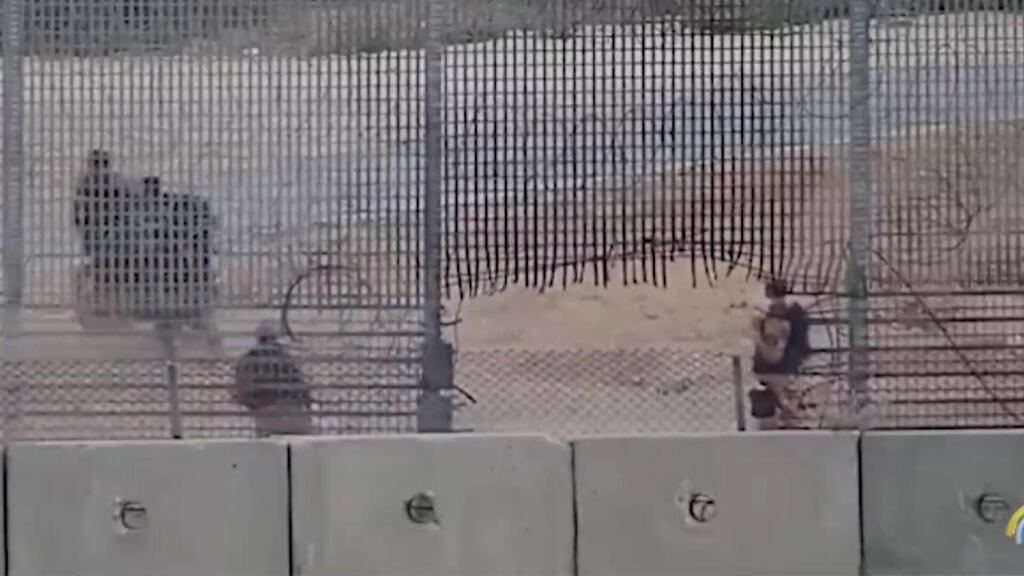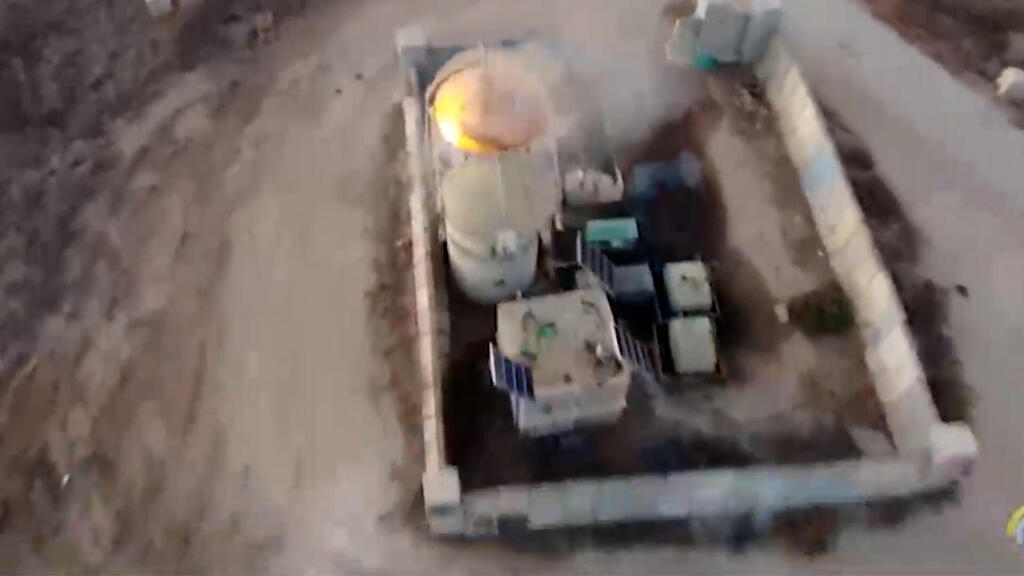Getting your Trinity Audio player ready...
An IDF investigation into the battle at the Erez Border Crossing and the District Coordination and Liaison Administration (DCL) located at Erez has revealed significant failures in defensive preparedness, command and control, and operational response. The results of the investigation were released on Sunday evening.
Among the key findings were: Inability to transition from a defensive posture to a reinforced combat formation; Lack of artillery support that could have provided a defensive response; Unpreparedness of the DCL for combat or defensive operations; Absence of a proper defense plan against an attack.
Approximately 120 Hamas terrorists infiltrated the Erez during the October 7 assault, in which nine Israeli soldiers were killed, and three were taken hostage.
The investigation revealed that approximately 20 Nukhba terrorists initially breached the base, carrying out killings, kidnappings, looting and other brutal acts. Later, around 100 more terrorists entered the area—some from Palestinian Islamic Jihad and others unaffiliated with any specific group—engaging in additional looting. The report found that the force assigned to defend the base was insufficient even for a more limited attack scenario.
The investigation, which lasted about a year, included interviews with soldiers stationed at the base, troops who fought in the area, and meetings with the families of fallen soldiers. Data was collected from radio communications, intelligence reports, interrogations of captured terrorists, security footage and battlefield reenactments to create the most accurate possible picture of the events. The military operational review focused on the sequence of events, battle management and the conduct of security forces.
The battle at the Erez Crossing and CLA was one of many clashes in the October 7 attack. The simultaneous infiltration of thousands of terrorists into dozens of locations made it difficult for security forces to respond effectively—a challenge highlighted in multiple IDF investigations.
Key findings of the investigation
The IDF presented its findings to soldiers who had been stationed at Erez and forces involved in the battle. The investigation determined that the military failed in its mission to defend the base. However, it also noted that troops' initial engagement with the attackers in the first hour helped save many lives and reduced potential damage. Additionally, air force strikes neutralized dozens of additional terrorists attempting to infiltrate the area.
During the attack on the DCL compound, nine soldiers were killed and three were kidnapped, one of whom remains in Hamas captivity in Gaza.
The Erez Crossing area is divided into several sections: The vehicular crossing; The pedestrian crossing; (terminal); The military base (Erez CLA); The "Balloon" compound.
3 View gallery


The three soldiers kidnapped from Erez: Tamir Nimrodi, Nick Beiser and Ron Sherman
(Photos: Hostages and Missing Families Forum, private album, courtesy of the family )
On the eve of the attack, responsibility for the area fell under Battalion 77 of the 7th Brigade. The Erez CLA housed the battalion’s reserve platoon, with the exception of one squad stationed elsewhere. The crossing was guarded by five security personnel, as was standard on weekends.
Get the Ynetnews app on your smartphone: Google Play: https://bit.ly/4eJ37pE | Apple App Store: https://bit.ly/3ZL7iNv
At 5:30 a.m., the battalion conducted its routine morning readiness check based on the known situational assessment. At 6:29 a.m., Hamas launched a massive rocket barrage at IDF bases in the region, aimed at forcing troops into shelters and preventing them from defending communities and key positions. The terrorists breached the border in multiple locations using vehicles, motorcycles, and on foot.
Breakdown of the Attack
The attack unfolded in several stages:
Phase One: Initial Infiltration (6:29 - 6:59 a.m.)
6:32 a.m.: Observers reported a convoy of terrorists approaching Erez Crossing in pickup trucks. The on-duty commander and operations officer entered the command center. Soldiers at the base moved to protected positions.
6:35 a.m.: The reserve platoon attempted to flank the terrorists at a breach point but was ordered to turn back due to the overwhelming number of attackers.
6:42 a.m.: Terrorists stormed the Erez Crossing, spread out across the vehicular and pedestrian areas, and took positions on the roof, firing at the base. The reserve platoon’s deputy commander attempted to reach the terminal security guards but was forced to retreat under fire.
6:52 a.m.: The five security guards locked themselves in a room on the second floor.
6:54 a.m.: A terrorist cell placed an explosive on the perimeter wall but failed to breach it. Minutes later, terrorists entered the base through the southern gate, sparking a gunfight.
Phase Two: Fighting in the Erez CLA (6:59 - 7:20 a.m.)
7:00 a.m.: Three soldiers ran toward bomb shelters but found them locked, forcing them to hide in a concrete corridor.
7:04 a.m.: The on-duty CLA commander fired at the terrorists before retreating to the command center after running out of ammunition.
Shortly after: A terrorist threw a grenade at the dining hall entrance. In response, soldiers ran toward the command center under fire. One was killed immediately, while another later succumbed to his wounds.
Around the same time: Terrorists entered the soldiers’ living quarters, killing three and abducting three others.
Phase Three: Ongoing Battle (7:20 - 9:30 a.m.)
7:22 a.m.: The Israeli Air Force (IAF) began striking the area.
7:34 a.m.: Anti-tank missiles were fired at IDF troops, killing one soldier.
8:22 a.m.: IAF airstrikes hit enemy vehicles near the border, stopping another wave of terrorists.
8:30 a.m.: Fighting at the base ended.
9:00 - 9:30 a.m.: Soldiers took cover in a protected area as the IAF prepared for further strikes.
Phase Four: Continued Fighting and Additional Infiltration (9:30 a.m. - 3:00 p.m.)
10:30 a.m.: More terrorists, including those from Palestinian Islamic Jihad, entered the base, looted supplies, and set fires.
1:30 p.m.: A surviving officer escaped with another soldier through the greenhouses of Netiv HaAsara and reached the local security officer.
Phase Five: Clearing the Base (3:00 - 11:00 p.m.)
3:00 p.m.: An elite combat engineering unit arrived and cleared the base. No live terrorists were found.
3:45 p.m.: A paratrooper unit rescued the security guards hiding in the communications room.
7:00 p.m.: The fallen and wounded were evacuated to the Yad Mordechai junction.
11:00 p.m.: Control of the base was handed back to the regional force.
Main conclusions of the investigation
Failure to transition from defense to combat: The forces at the base lacked the ability to shift from a defensive position to a reinforced battle-ready state.
Insufficient forces for defense: The troops stationed at Erez were not sufficient even for a smaller-scale infiltration scenario.
Command and control gaps: Lack of unified command and direct coordination among officers left many soldiers to act independently.
Strategic weakness of the base: The Erez CLA was structured as an administrative facility rather than a military outpost, making it vulnerable.
Absence of artillery support: No artillery units were positioned in the area to assist during the attack. Air force strikes, however, were effective in repelling additional infiltrations.
Operational readiness issues: There was no clear protocol for responding to rocket fire as a prelude to an attack, and at least one soldier was found to be unarmed at the time of the assault, a breach of basic military discipline.
The findings of this investigation underscore critical failures in planning and defense that left the Erez base exposed, contributing to the heavy casualties and the abduction of IDF soldiers. The broader challenge of simultaneous mass infiltrations across multiple locations on October 7 remains a focal point in ongoing military reviews.





